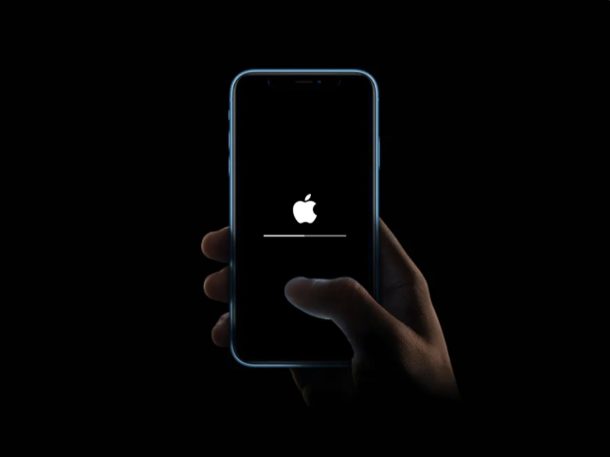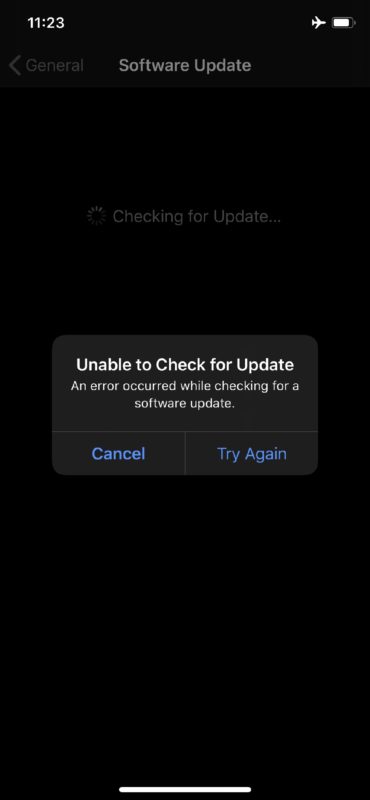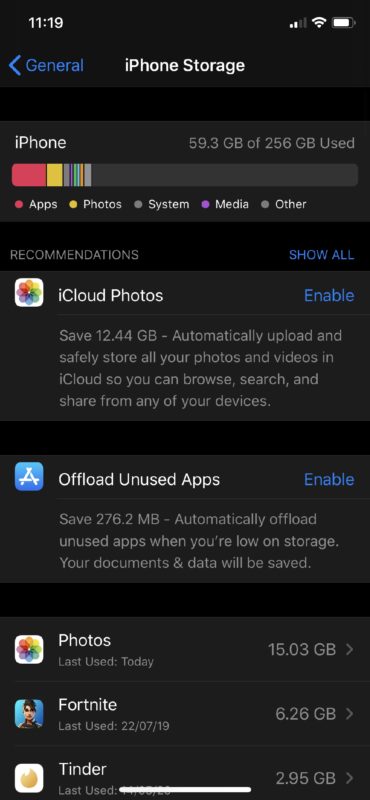iOS Update Failed? Here’s How to Troubleshoot Failed Software Updates on iPhone & iPad

If you’ve ever had an iOS update fail to complete, you know it can be pretty annoying and frustrating. While typically iOS and iPadOS updates go without a hitch, sometimes the process is not as smooth as you’d like it to be. But don’t freak out, if you’re experiencing iOS or iPadOS updates failing, we’ll walk through some helpful steps to troubleshoot failed system software updates on iPhone and iPad.
There are several reasons why an iOS update fails, ranging from common networking issues, to a corrupted update file, a failed download, or even a lack of enough storage space on your iPhone or iPad. This issue can happen whether you’re trying to update wirelessly over-the-air with Settings, or even with iTunes or Finder.
If you’re facing issues while trying to update iOS or iPadOS, check out these troubleshooting tips to hopefully fix the problem on your iPhone or iPad.
How to Troubleshoot Failed iOS & iPadOS Updates on iPhone & iPad
Let’s take a look at some of the various troubleshooting methods you can try whenever you’re unable to update the software on your iOS device.
1. Check if You Have an Internet Connection
If the update gets stuck while you’re downloading, it could be due to a poor internet connection, or a dropped connection. So, make sure you’re connected to Wi-Fi, and you might want to make sure you’re able to browse within Safari before retrying the update again.
This could also be the reason why you’re getting “Unable to check for Update” or “Unable to verify update” errors on your iPhone or iPad.

2. Check Your iPhone / iPad Storage
As we mentioned earlier, lack of enough storage space on your iOS device could prevent you from updating it. Make sure you have enough free space by heading over to Settings -> General -> iPhone (iPad) Storage.

Generally speaking, you’ll want to have at least 10-15% of the devices total storage available as free space for optimal performance, and to be able to easily install system software updates onto the iPhone or iPad. This isn’t a hard rule by any means, it’s just an observation over time by longtime iOS users.
3. Delete & Re-download the Update
Sometimes, a variety of issues may cause the system software update to become corrupted or unusable. Perhaps it’s from repeated disconnections from the internet while downloading the update file. Whatever the case, you can delete the iOS or iPadOS update file and redo the whole update process again.
In order to delete an iOS or iPadOS software update from your iPhone or iPad, go to Settings -> General -> iPhone / iPad Storage and tap on the iOS update file located among the list of apps.

4. Connect to a Power Source
An iOS or iPadOS update can sometimes take a while to complete, ranging from several minutes to an hour or more, depending on the size of the update, and a variety of other factors. Once the update has started, you’ll notice the Apple logo with a progress bar, and at this stage it’s critical to not interrupt the software update. Therefore, it’s generally good practice to connect your iPhone or iPad is connected is a power source, and make sure it has at least 55% battery available before attempting an iPadOS or iOS software update.

5. iPhone or iPad Bricked During a Software Update? Try Recovery Mode
Rarely during an iOS or iPadOS update, you may ‘brick’ a device – meaning it becomes totally unusable and unresponsive. This is typically indicated by the device being stuck on the Apple logo for many hours, or if the progress bar is stuck for an inordinately long time (like overnight). In such a situation, you might need to put your device into recovery mode and set it up again by connecting it to your computer using iTunes or Finder. Entering recovery mode varies with the iPhone or iPad model you own.
If you own an iPad with Face ID or an iPhone 8 & newer device, quick-press the Volume Up button and then quick-press the Volume down button. Right after, press and hold the power button until your device begins to restart.
On the other hand, if you own an iPhone 7 or older iPhone, press and hold the Volume Down and power button simultaneously until you see the recovery mode screen. As for iPad models with a physical home button, press and hold the home button and power button simultaneously until you enter the recovery mode screen.

Once you’ve entered the Recovery mode, connect your iPhone or iPad to the computer using the provided Lightning or USB-C cable and open iTunes. You might get a pop-up with the message “There is a problem with the iPhone (iPad) that requires it to be updated or restored”. Just choose to “Update” your device to go through the software update process again, this time via iTunes.
However, if you don’t get this pop-up message, you’ll need to restore your iPhone or iPad from a previous iTunes backup to revert the update and then start the update process all over again. Now, if you use iCloud for backups instead of iTunes, make sure you restore it as a new device and you’ll be able to use your previous iCloud backup in the setup screen on your device.
6. Turn the iPhone / iPad off and on
This is fairly simple advice that perhaps could have been one of the first steps, but you can also try simply turning the iPhone or iPad off, then back on again. Then once the device is powered back on, try installing the software update and see if it works this time. Oftentimes this alone will resolve issues, particularly if they’re seemingly random.
7. Unable to Download the iOS Update or Other Networking Issues?
If you’re unable to download the iOS update due to connectivity issues, try resetting your network settings by going to Settings -> General -> Reset on your iOS device. Be mindful that you’ll lose your saved Bluetooth connections, Wi-Fi networks and passwords once you reset these settings.
Hopefully by now you have fixed the issues you were facing during the iOS or ipadOS software update process.
Did you these tips help you to update your iPhone and iPad to the latest firmware? Which of these troubleshooting methods we discussed here worked for you? Did you find another solution? Share your own experiences and thoughts in the comments.


Successfully updated iPhone and one iPad, but no such like with the iPad Pro , 5 attempts that ended with : There was an error . I gave up
I left my ipad to update over night last week to 14.2 when i went to use it again nothing just a black screen.
I can hear button clicks and even got voice over assitant to read out things like home and header but have been unable to get it worked.
Followed apple support instructions for connecting it to a mac and reinstalling.
I even bought iMazing to try and erase and reinstall 14.2 without success.
Does anyone know of anything else worth trying?